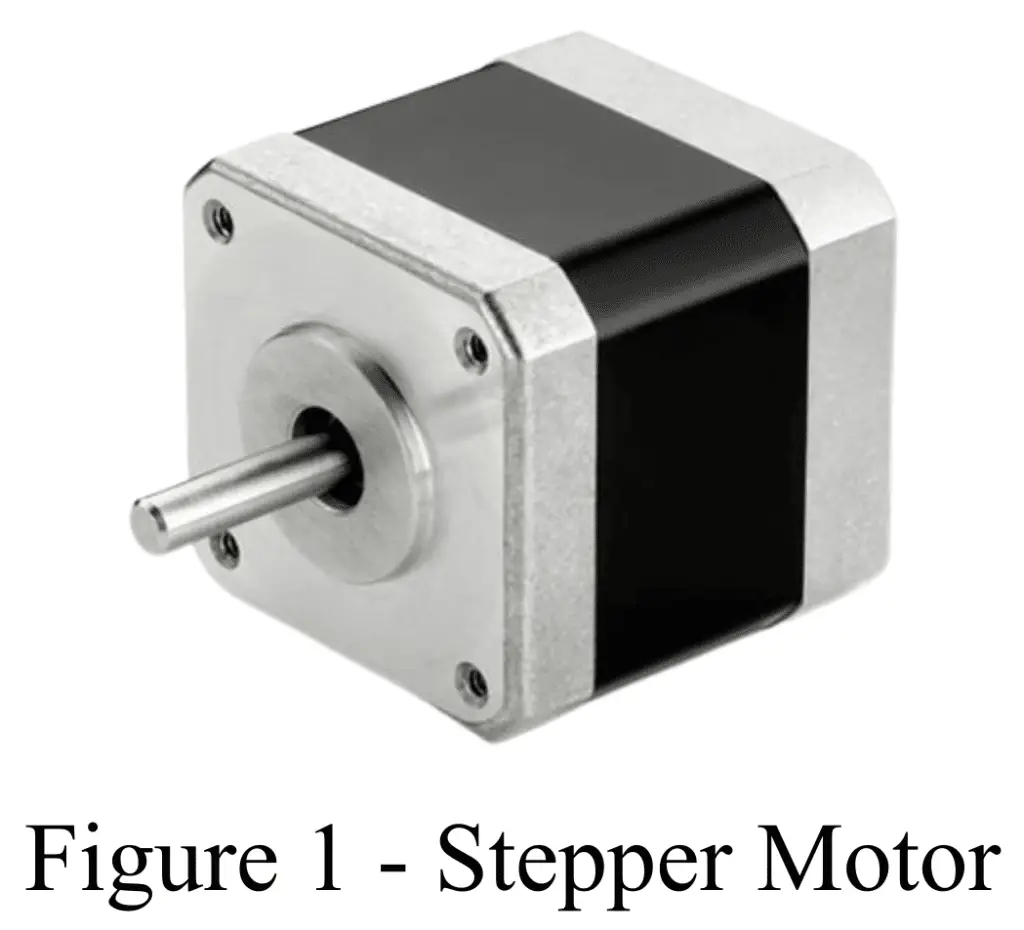Stepper motors have more pole counts, generally between 50 and 100. whereas Servo motors have a low pole count – between 4 and 12.
An electric motor is defined as a DC or AC-powered machine which functions as an electromechanical energy convert, converting electrical energy into mechanical energy output with the aid of shaft rotation.
Electric motors can be divided into several types depending on their working principle, power supply, and applications such as AC motors, DC motors, induction motors, stepper motors, servo motors, and so on.
This article will discuss the difference between the stepper motor and the DC motor, and highlight the main criteria of differences between them. But before that let’s discuss the basics of stepper motor and DC motor.
What is Stepper Motor?
Stepper Motor is a kind of electric motor that runs on a DC power supply and the 360-degree rotation of the motor is equally divided into small steps of equal measure. The stepper motor is constructed using equally distanced coils on the surface of its stator. These wire windings are referred to as magnetic poles when it is supplied with electric current. Furthermore, the rotor is also comprised of a controller, that controls the flow of current to each consecutive stator coil.
Due to the rotation of the motor in steps, controlled by the motor controller, the name ‘stepper motor’ was coined for this type of motor. The stepper motors are used extensively in printers, hard drives, and other control systems that require precise operation or work to be done in a stepwise manner. Figure 1 shows a typical stepper motor.

Stepper motor works on the principle of electromagnetism. According to this principle, the stator is supplied with DC current to generate a rotational magnetic field. This rotational magnetic field induces the rotation of the rotor.
Stepper motors can be classified into the following 4 types:
- Permanent magnet stepper motor
- Variable reluctance stepper motor
- Hybrid stepper motor
- Full-step stepper motor
What is DC Motor?
A DC Motor is a kind of electric motor that operates by the conversion of electrical energy in the form of direct electric current, into mechanical energy in the form of shaft rotation.
Based on the presence of brush, DC motors are of the following two types:
- Brushed DC motor
- Brushless DC motor
The DC motor is composed of the stator and rotor. The stator is responsible for generating a magnetic field, while the rotor acts as the armature of the DC motor. The other two vital components of a DC motor are the carbon brushes and the commutator segments. The carbon brushes are responsible for maintaining the electrical connection between the armature and the commutator segments. The commutator segments present the edges of the armature windings. Figure 2 below illustrates a typical DC motor.

The DC motor operates on the principle of Lorentz Law. The principle of operation of the DC motor involves the interaction of the magnetic field of the stator and rotor, resulting in the generation of motor torque. This generation of torque, results in the rotation of the DC rotor, producing mechanical energy as the output of the shaft. DC motors of varied sizes find their applications in numerous electronic devices such as toys, cranes, power tools, elevators, etc.
Difference between Stepper Motor and DC Motor
The following table highlights the key differences between the stepper motor and the DC motor.
| Parameter | Stepper Motor | DC Motor |
| Definition | A Stepper motor is a DC machine that undertakes a complete revolution in equal-sized steps | DC motor is a machine that runs on direct electric current to generate mechanical energy from electrical energy. |
| Types of Motor | Stepper motors can be of four main types namely – permanent magnet, hybrid, full-step, and variable reluctance stepper motors. | DC motors can be broadly classified into 2 main types, viz. brushed and brushless DC motors |
| Working Principle | Stepper motor works on the principle of electromagnetic induction. | DC motor operates on the principle of Lorentz Law. |
| Rate of Rotation | The stepper motor rotates at an average speed ranging between 200 and 2000 RPM. | The DC motor has a variable moderate speed based on the kind of DC motor. |
| Type of Movement | The motion of stepper motors is based on an incremental or stepwise approach. | The motion of DC motors is rather continuous. |
| Dependability | Stepper motors provide highly accurate output. | DC motors provide intermediate accuracy on the output generated. |
| Upkeep | Due to the absence of brushes, the stepper motors do not require frequent maintenance or upgrades. | Due to the presence of brushes, DC motors require frequent maintenance or upgrades to function properly. |
| Performance | The efficacy of stepper motors is relatively low. | The efficacy of DC motors is relatively high. |
| Continuous / Non-Continuous Use | Stepper motors are used to operate for short durations with frequent gaps, i.e. in a non-continuous manner. | DC motors are used to operate for longer durations with minimum or no gaps, i.e. in a continuous manner. |
| Applications | Stepper motors find their applications in the angular control of machines such as doors, toys, robotic arms, printers, etc. | DC motors find their applications in the operation of several electronic devices such as several home appliances such as mixers, microwaves, toys, etc. |
Conclusion
In conclusion, stepper motors and DC motors operate on similar principles based on electromagnetic induction. Additionally, both of these types of motors are relatively inexpensive, which makes them affordable to use in a wide range of applications in industries, several home appliances, and toys. However, there exist several differences that set them apart. The major difference that makes them different is that stepper motors operate in a step-wise manner, while DC motors function in a relatively continuous manner.